Teaching and learning to code can be a daunting prospect for many, and transitioning from block coding to text-based coding can often be a barrier to learning coding languages like Python. Python in Pieces aims to bridge that gap and has been designed to seamlessly transition students from block code, commonly used at Primary school, to the text-based coding that is required at Secondary school level and beyond.
For schools, the question of which programming languages and tactics to focus is always difficult. To tackle this issue, VEX Robotics - the global leader in classroom and competition robotics - is kicking off the academic year with the introduction of two major edu-innovations. 2018/19 will be the year of VEX Coding Studio and STEM Labs. As well as getting students up to scratch in coding and computer science, both releases develop 21st-century skills like problem-solving, creativity and computational thinking. You’ll want to know about these resources - especially as they’re… free-of-charge - so let’s get acquainted.
VEX Coding Studio (VCS) is a one-stop software solution for the VEX IQ (Key Stage 2 and 3) and VEX EDR V5 (Key Stages 3, 4 and 5) robots. It seamlessly takes students from block-based to textual programming, walking learners through this notoriously difficult transition in a logical process. The software even opens up routes to advanced object-oriented concepts to stretch keen students.
Teachers can struggle with choosing which type of code to teach, but VCS covers three of the four most popular programming languages currently in use: Python, JavaScript and C++. These account for almost 40% of the programming languages used worldwide, giving students industry-relevant knowledge and giving teachers the flexibility to decide which code to teach which class.
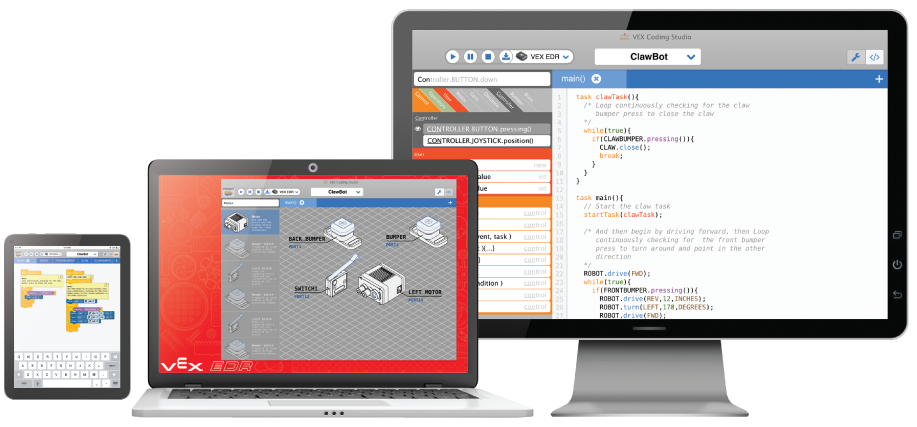
VEX robots bring code to life and allow students to see the direct impact of programming on the real world. Getting hands-on with the EDR V5 and IQ robots actively involves students in the learning process and allows them to take ownership of their STEM learning; they’ll learn how individual maths and engineering elements come together to form solutions to practical problems.
The free VCS software is available on Windows and Mac, with Android, iOS and Chromebook support coming soon.
STEM Labs are a series of scaffolded, hands-on activities aligned with education standards that show real-world applications of concepts using the VEX EDR. Activities include diverse builds, games and competitions, all designed by a team of classroom teachers and cognitive scientists working closely with the world-renowned Carnegie Mellon Robotics Academy.
STEM Labs offer hundreds of hours of free curriculum content across the STEM subjects and beyond. They implement concepts into Maths, Design & Technology, Engineering and Computer Science subjects, with minimal preparation time for teachers. Each STEM Lab can be used on multiple platforms and includes easy to follow build instructions. The activities give students multiple approaches to solving a problem, allowing them to communicate and collaborate with their classmates, experiment, and design creative solutions.
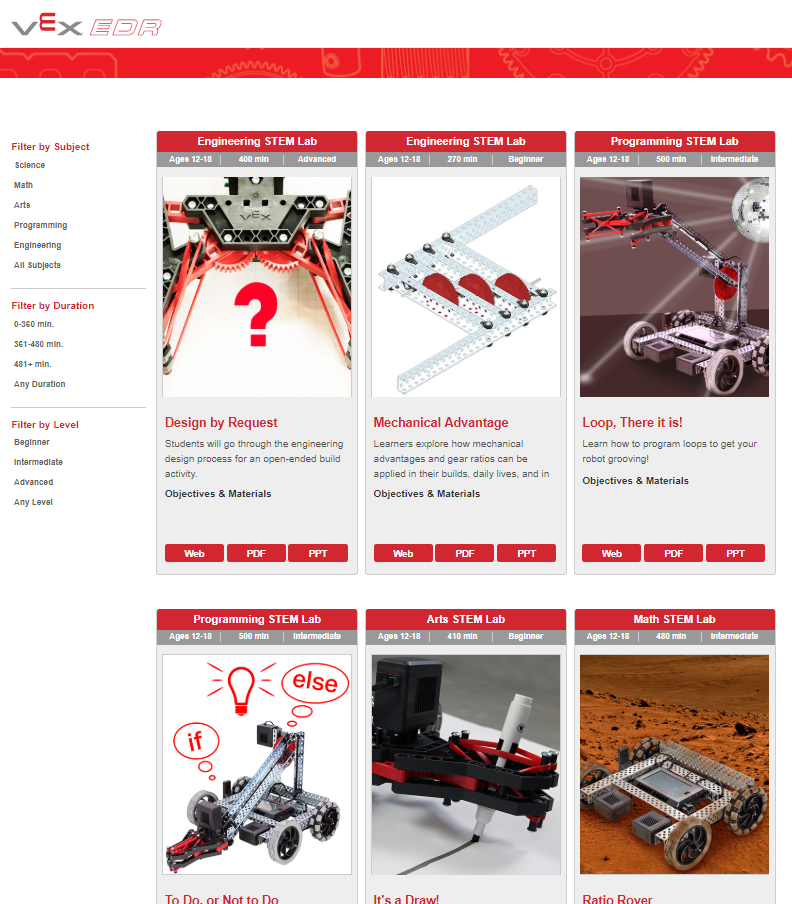
With these amazing free resources, VEX Robotics continues to lead the way in classroom robotics. Through the VEX IQ and VEX EDR robotic platforms, as well as the fastest growing robotics competitions in the UK, the VEX IQ Challenge and VEX Robotics Competition, the company aims to inspire the world’s next generation of innovators, thinkers and problem solvers.
Check out https://www.vexrobotics.com/programming for information on VEX Coding Studio, and https://education.vex.com/ for access to STEM Labs.
Want to receive cutting-edge insights from leading educators each week? Sign up to our Community Update and be part of the action!
Although the new Computing curriculum was transformed to become more relevant to 21st century students, learning to code and create on the web is still generally perceived as being ‘difficult’ and ‘dull’. It’s considered to be more appealing to students who are better at Maths and Science, and not those with an interest in languages and the arts.
The computing curriculum has been in place in schools across the UK for the best part of a year; enough time for both teachers and students to have adjusted to this new and challenging subject; in theory, at least. In reality however there is a huge discrepancy between the graphical ‘concept’ environments like Scratch, and the more complex text-based languages such as Python, both of which are used to teach students computing.
Is the traditional classroom setting too archaic? Computer Science teacher Adam Speight looks at how he’s designed his Kings Monkton School classroom with progressive learning in mind.
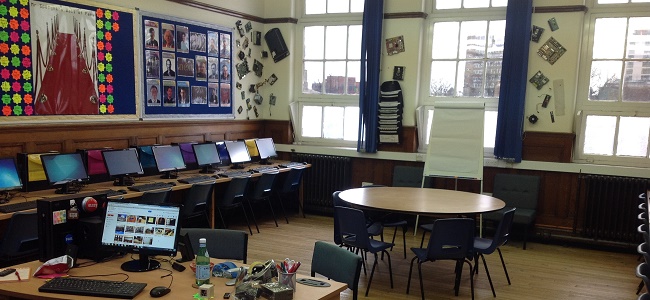
The traditional model of what a secondary school looks like from the outside is diminishing all the time. If you look at any new schools which are being built you will see that vast amounts of money are being spent on how they look cosmetically-speaking. However, look inside them and you’ll see the classrooms within look very much the same as those found within traditional school buildings. This is because these classrooms are normally designed so that the desks are arranged in long lines and the teaching experience is very much teacher-led. This is a big problem, because if learners are to be fully engaged within a learning environment, then the learning environment must be designed in a way which suits them and enhances both teaching and learning.
My to-do list during the summer holidays included preparing a number of collaborative problem-solving tasks (mysteries) for the new computing at schools (CAS) curriculum, KS2 and KS3. With my programming background, I focused on the computing science bit rather than information technology or digital literacy.
Chances are, your school uses a large amount of internet-connected devices during its daily business. How best to go about ensuring that everyone using them stays e-safe? Charles Sweeney, CEO at Bloxx, gives his top tips for keeping yourself covered.

The rapid, pervasive and unrelenting nature of the internet’s impact on the curriculum means that schools and other educational establishments have had to rapidly understand this changing environment. Balancing the great potential of the web with its inherent risks isn’t easy. In fact, the latter can sometimes seem overwhelming. Understanding the cybersecurity ecosystem and how it works is vital to helping educators identify what steps they need to take to protect young people.
A lot of UK teachers are having to look at how they can best teach this brand-new curriculum. Here, Leon Brown discusses the challenges that the computing curriculum raises, and how they can be turned into opportunities.
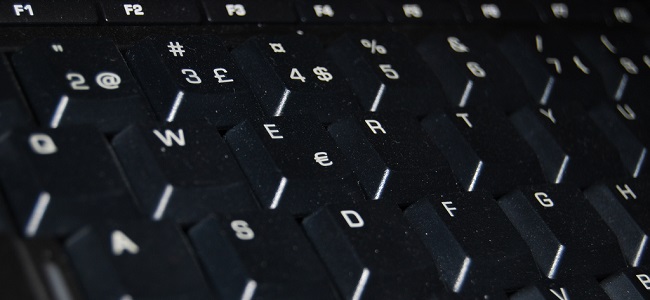
The specification of the new national curriculum for traditional subjects, such as maths and English, has the potential to cause headaches for teachers throughout the country, never mind the introduction of a whole new subject that the majority of teachers have never been involved with.
Much of the UK’s teaching community is currently trying to wrap their heads around the new computing curriculum. Bristol Robotics Lab’s Zan Nadeem is keen to stress how important she finds maths as a part of computer science.
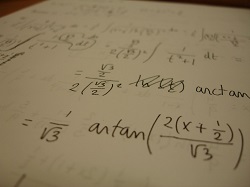
An article this week on how bad UK students are at maths compared to Chinese students, to be honest, wasn’t surprising. What makes it an even larger problem is that, with the push towards teaching computer science in schools, this lack of maths knowledge is going to cause problems.
Trying to get students to look at programming problems in a mathematical way and to solve them by using common maths facts is currently a huge challenge – yet this is a vital skill that needs to be taught, from an early age, if the next generation are going to be any good at writing programs.
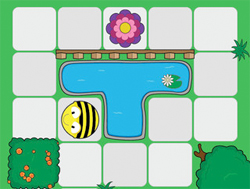
As part of the proposed new draft primary curriculum for ICT, there is a significant emphasis on computer science. Below I've included a selection of apps which can be used in both Key Stage 1 and Key Stage 2. The apps included range from basic skills in coding a Beebot to more advanced skills in coding games and simulations in apps such as Hopscotch and Codea.
I've also included some other useful 'ICT' apps, which can be used to develop a pupil's typing skills and spreadsheet skills.

A community-driven platform for showcasing the latest innovations and voices in schools
Pioneer House
North Road
Ellesmere Port
CH65 1AD
United Kingdom